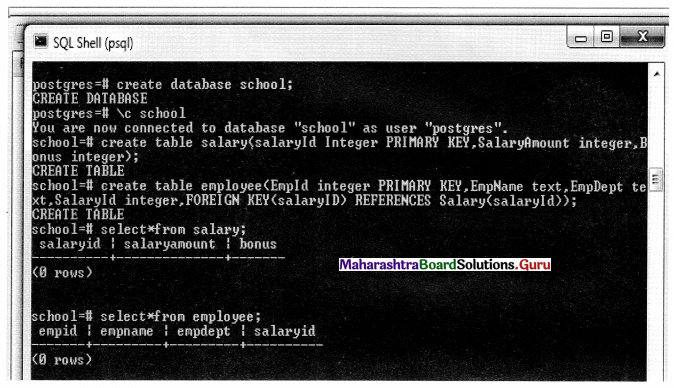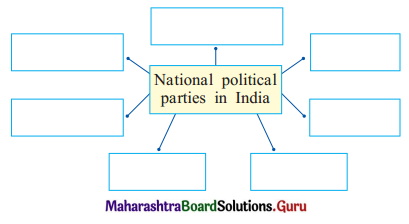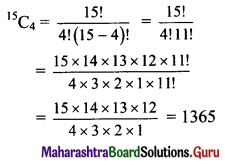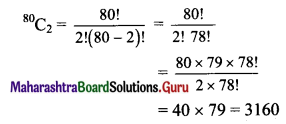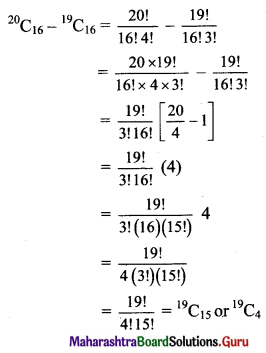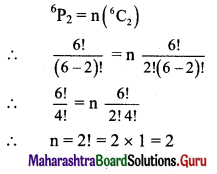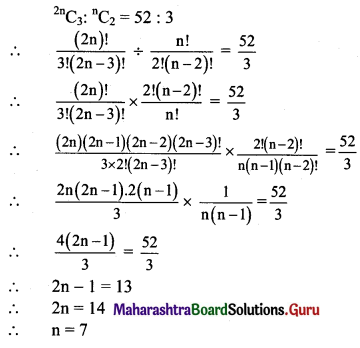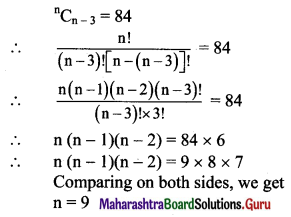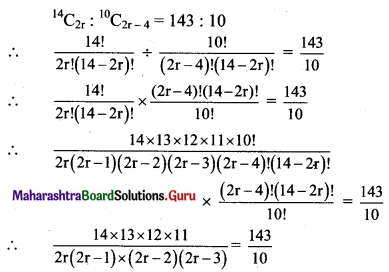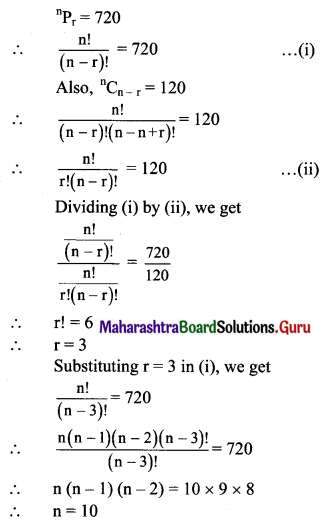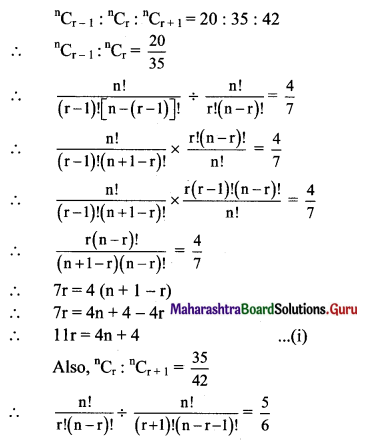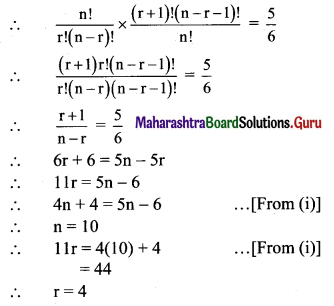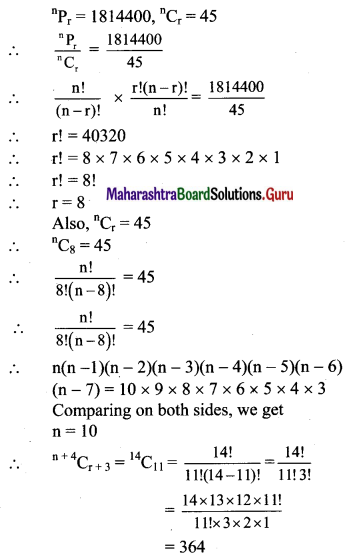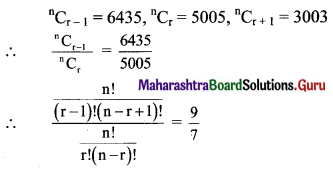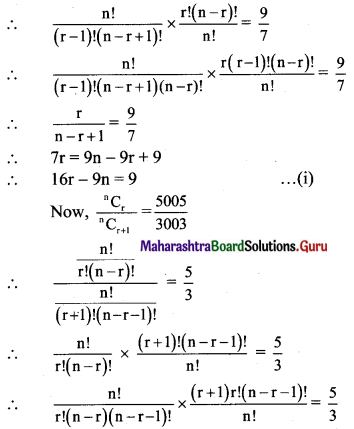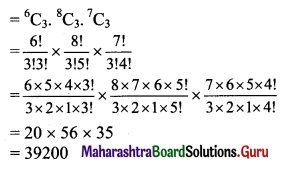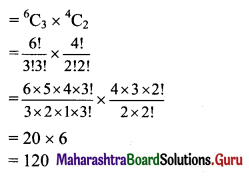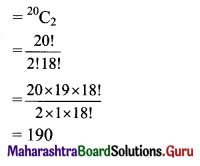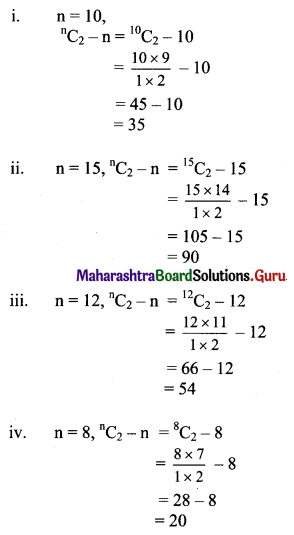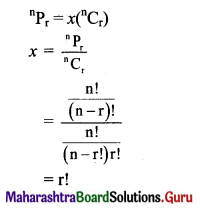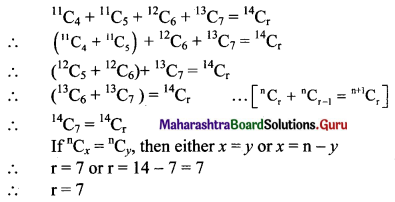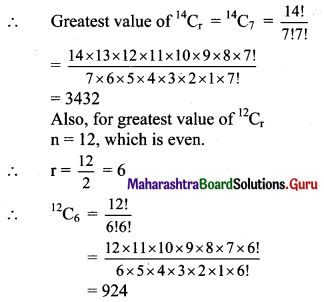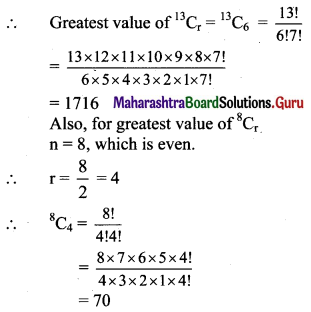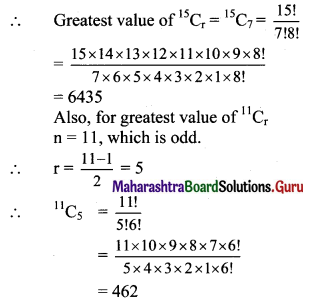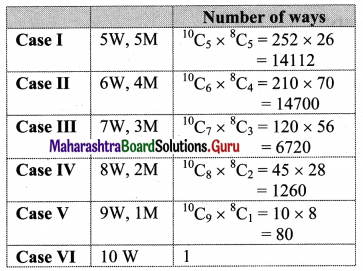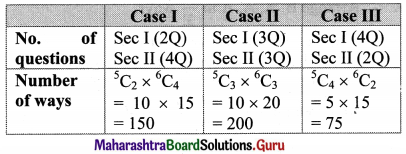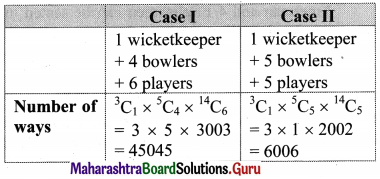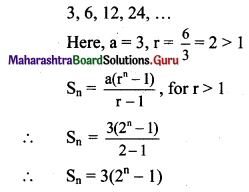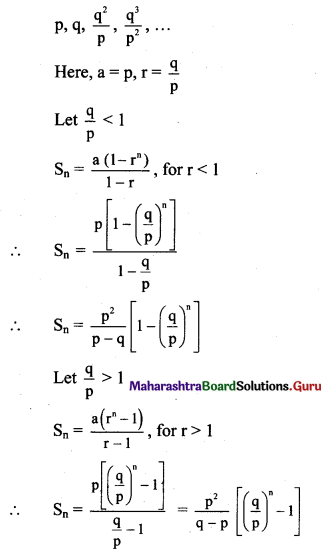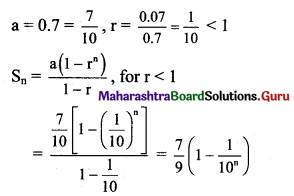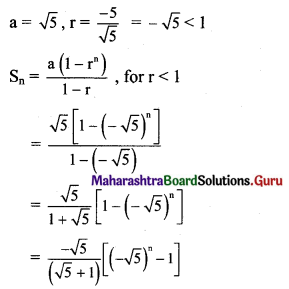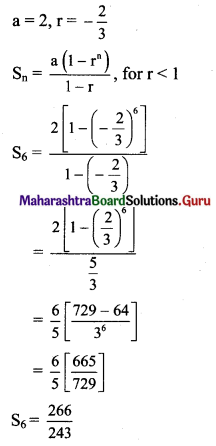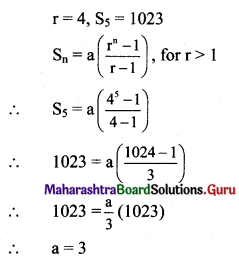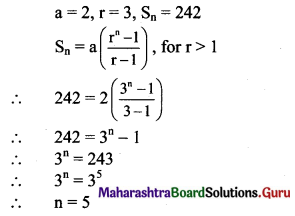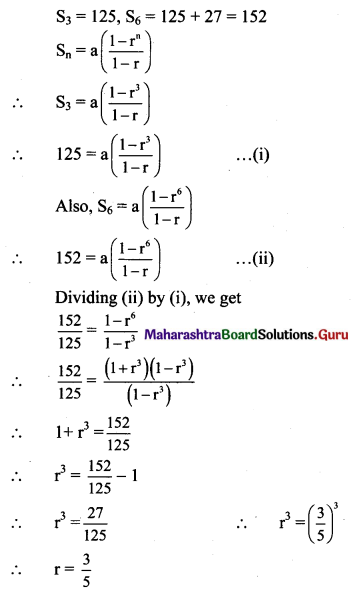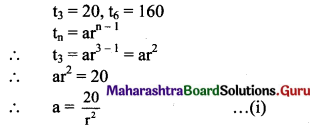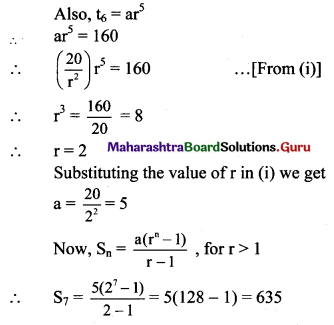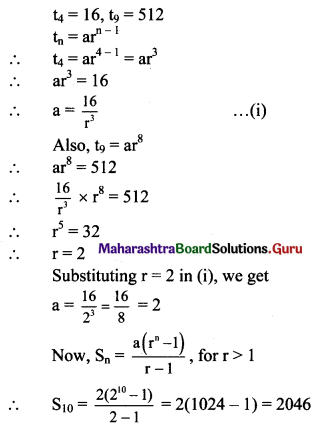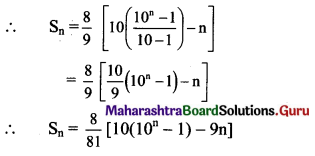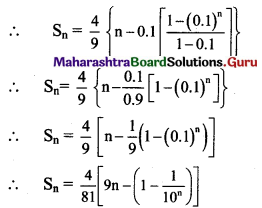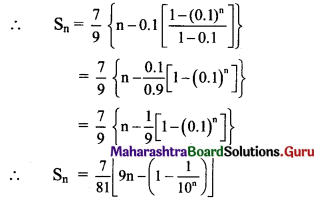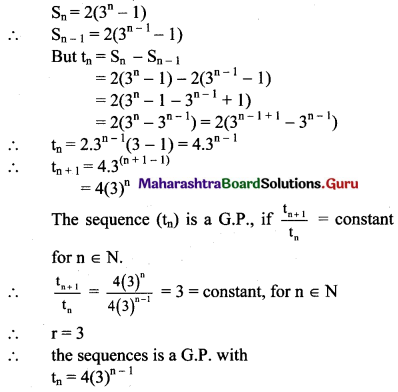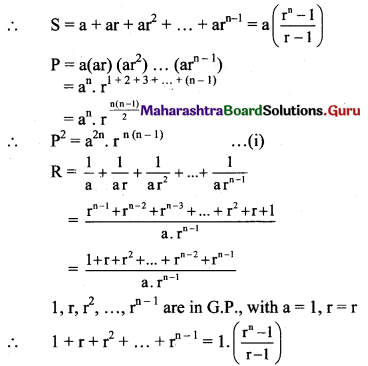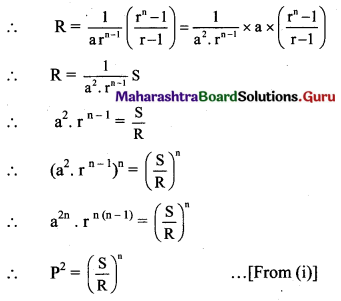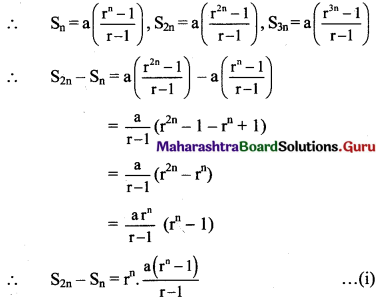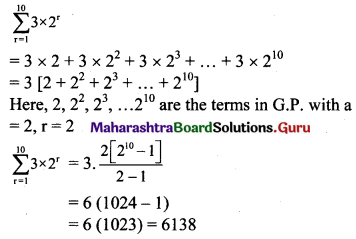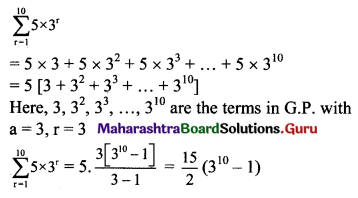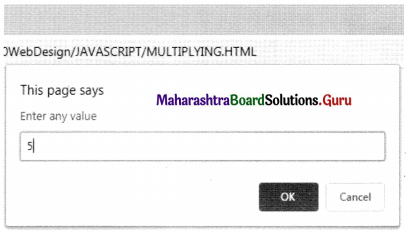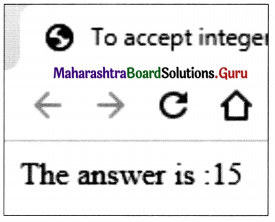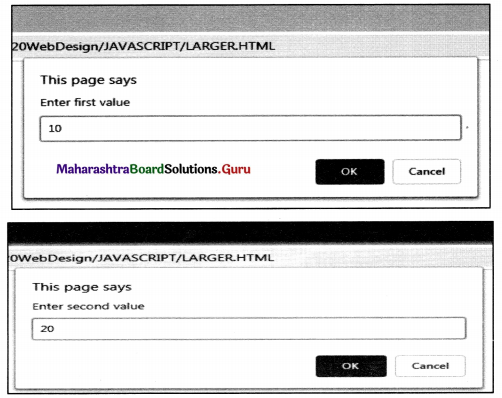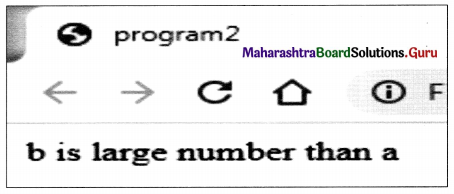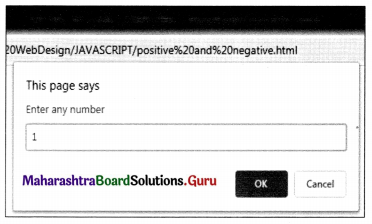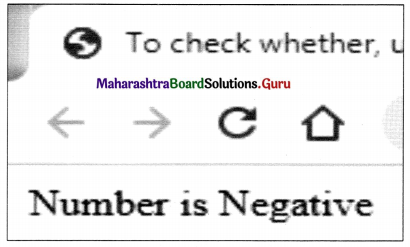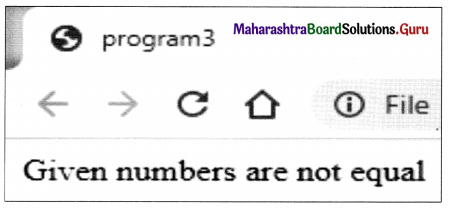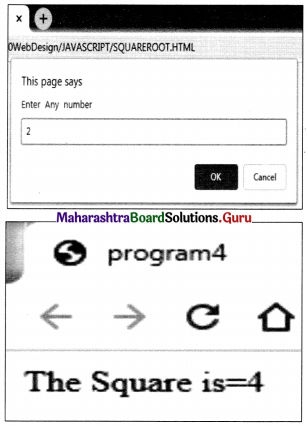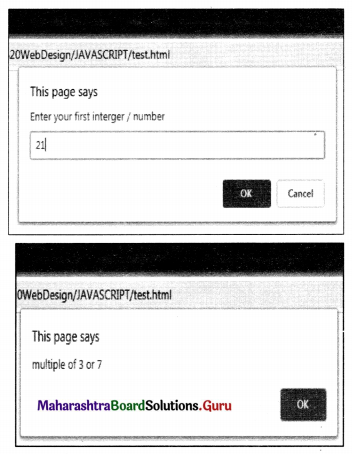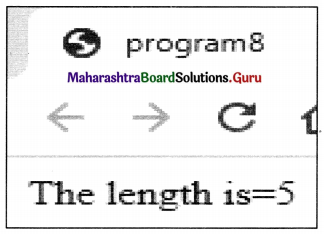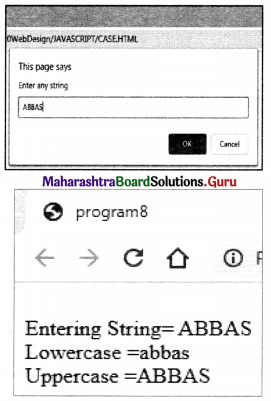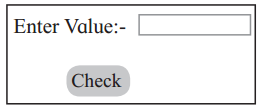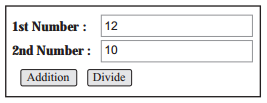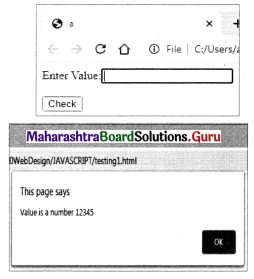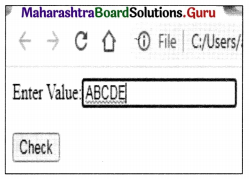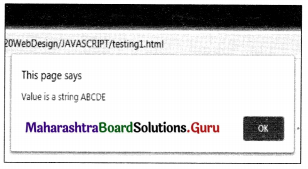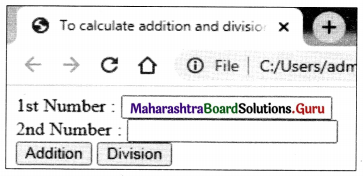Balbharti Maharashtra State Board Class 11 Secretarial Practice Solutions Chapter 3 Formation of a Company Textbook Exercise Questions and Answers.
Maharashtra State Board Class 11 Secretarial Practice Solutions Chapter 3 Formation of a Company
1A. Select the correct answer from the options given below and rewrite the statements.
Question 1.
A company is ____________
(a) a human being
(b) an artificial person created by law
(c) a natural individual
Answer:
(b) an artificial person created by law
Question 2.
____________ are the persons who undertake the process of formation of a company.
(a) Promoters
(b) Directors
(c) Registrar of companies
Answer:
(a) Promoters
![]()
Question 3.
A ____________ company needs minimum two or more members.
(a) Public
(b) Private
(c) One person Company
Answer:
(b) Private
Question 4.
In a public company there must be minimum ____________ or more members.
(a) one
(b) two
(c) seven
Answer:
(c) seven
Question 5.
____________ refers to contracts entered into by the promoters on behalf of a proposed company.
(a) Pre-incorporation/Prehminary contracts
(b) Fiduciary contracts
(c) Memorandum of Association
Answer:
(a) Pre-incorporation/Preliminary contracts
Question 6.
A Director must have a ____________ to be appointed as a Director of a company.
(a) PAN
(b) DIN
(c) CIN
Answer:
(b) DIN
Question 7.
____________ has 21 digit alpha-numeric code which is a unique number assigned to every company at the time of
Incorporation.
(a) DIN
(b) PIN
(c) CIN
Answer:
(c) CIN
![]()
Question 8.
____________ is a document that invites the public to buy the shares of a company.
(a) Articles of Association
(b) Prospectus
(c) Certificate of Incorporation
Answer:
(b) Prospectus
1B. Match the pairs.
Question 1.
| Group ‘A’ | Group ‘B’ |
| (a) Minimum 7 members | (1) Persons who conceive the idea of setting up a company |
| (b) DIN | (2) Public company |
| (c) Preliminary contracts | (3) Promoters |
| (d) Fiduciary duties towards the company | (4) Eight Digit alpha-numeric number |
| (e) CIN | (5) Private company |
| (6) Unique number assigned to each Director | |
| (7) ROC | |
| (8) 21 digit alpha-numeric code number | |
| (9) One Person Company | |
| (10) Contracts entered by Promoters with third parties |
Answer:
| Group ‘A’ | Group ‘B’ |
| (a) Minimum 7 members | (2) Public company |
| (b) DIN | (6) Unique number assigned to each Director |
| (c) Preliminary contracts | (10) Contracts entered by Promoters with third parties |
| (d) Fiduciary duties towards the company | (3) Promoters |
| (e) CIN | (8) 21 digit alpha-numeric code number |
1C. Write a word or a term or a phrase that can substitute each of the following statements.
Question 1.
A term which means registering a company as per provisions of Companies Act, 2013.
Answer:
Incorporation
Question 2.
Persons who undertake the necessary steps to set up a company.
Answer:
Promoters
Question 3.
The term refers to contracts entered into by Promoters with third parties on behalf of the proposed company.
Answer:
Preliminary contracts
Question 4.
The Birth Certificate of a company.
Answer:
Certificate of Incorporation
D. State whether the following statements are True or False.
Question 1.
A company is an artificial person.
Answer:
True
![]()
Question 2.
To form a Public company, there must be minimum of 2 persons/promoters.
Answer:
False
Question 3.
Promoters are persons who take the necessary steps to set up a company.
Answer:
True
Question 4.
Promoters can make secret profits while setting up a company.
Answer:
False
Question 5.
In India, companies have to be incorporated as per the provisions of the Companies Act, 2013.
Answer:
True
Question 6.
DSC is needed by Directors when they have to sign documents for e-filing.
Answer:
True
Question 7.
A company can be registered even without submitting a Memorandum of Association and Articles of Association.
Answer:
False
![]()
Question 8.
Every Director has to quote his DIN while giving his consent to be a Director of a company.
Answer:
True
Question 9.
ROC issues CIN only to certain companies.
Answer:
False
Question 10.
All companies need a Certificate of Incorporation.
Answer:
True
Question 11.
All companies need a Certificate of Commencement of business.
Answer:
False
1E. Find the odd one.
Question 1.
CIN, DIN, PAN
Answer:
PAN
Question 2.
Promoter, Prospectus, Incorporation of a company
Answer:
Prospectus
1F. Complete the sentences.
Question 1.
Promoters are the persons who undertake the process of ____________
Answer:
Formation of a company
Question 2.
The document issued by the Registrar of Companies when a company is incorporated is called as ____________
Answer:
Certificate of Incorporation
![]()
Question 3.
On incorporation of a company the ROC allows a unique identity number called as ____________
Answer:
Corporate Identity Number (CIN)
Question 4.
On behalf of a proposed company, preliminary contracts with third parties are entered by ____________
Answer:
Promoters
1G. Select the correct option from the bracket.
Question 1.
| Group ‘A’ | Group ‘B’ |
| (1) Promoter | …………………… |
| (2) ……………………. | Certificate of Incorporation |
| (3) CIN | …………………… |
| (4) RUN is used for | ………………….. |
(Corporate Identity Number, Reserving name of a company, Formation of a company, Birth certificate of a company)
Answer:
| Group ‘A’ | Group ‘B’ |
| (1) Promoter | Formation of a company |
| (2) Birth Certificate of a company | Certificate of Incorporation |
| (3) CIN | Corporate Identity Number |
| (4) RUN is used for | Reserving name of a company |
1H. Answer in one sentence.
Question 1.
Who is a Promoter?
Answer:
A person/a group of persons who take initiative efforts for a formation of a company is/are called as ‘Promoter/s’.
Question 2.
What is CIN?
Answer:
It is the Corporate Identity Number, issued by ROC at the time of incorporation of the Company.
Question 3.
Which company needs a Certificate of Commencement of Business?
Answer:
Public and Private companies having share capital and which are incorporated after 2nd November 2018 need a Certificate of Commencement of Business.
![]()
Question 4.
What are Preliminary Contracts?
Answer:
Promoter entering into a contract with third parties on behalf of the company before incorporation is called as Preliminary Contracts.
1I. Correct the underlined word and rewrite the following sentences.
Question 1.
ROC prepares draft Memorandum and Articles of Association.
Answer:
Promoter prepares draft Memorandum and Articles of Association.
Question 2.
Certificate of Commencement of Business is like a birth certificate of a company.
Answer:
Certificate of Incorporation is like a birth certificate of a company.
1J. Arrange in proper order.
Question 1.
(a) Appoint First Directors
(b) Prepare Draft Memorandum of Association and Articles of Association.
(c) Come up with the business idea
Answer:
(a) Come up with the business idea
(b) Appoint first Directors
(c) Prepare draft Memorandum of Association and Article of Association.
![]()
Question 2.
(a) Incorporation of a company
(b) Commencement of a company
(c) Promotion
Answer:
(a) Promotion
(b) Incorporation of a company
(c) Commencement of Business
2. Explain the following terms/concepts.
Question 1.
Promoters
Answer:
A person who take lead to form the company is called a “Promoter”. As per Companies Act, 2013; Section 2(69) Promoter is defined as,
- A person, who has been named in the prospectus or identified by the company in Annual Return or
- Who has control on company’s affairs directly or indirectly whether as a shareholder, director or otherwise or
- In accordance with whose advice, directions, or instructions, the Board of Directors is accustomed to act.
Question 2.
Promotion
Answer:
It is the first stage of Company formation. It means taking necessary steps to incorporate a company as per the provisions of the Companies Act, 2013.
Question 3.
Certificate of Incorporation
Answer:
It is a certificate issued by the ROC, after verifying all the documents and information provided by the promotors. It is like the Birth Certificate of the company. The company becomes a legal person or a body corporate having perpetual succession on getting incorporation certificate.
![]()
Question 4.
Simplified Proforma for Incorporating Company Electronically (SPICe)
Answer:
As per new rule 38 of Companies (Incorporation) (Fourth Amendment) Rules, only one form like FORM INC-32 (SPICe) needs to be submitted at the time of incorporation.
SPICe is to be filed for applying for:
- Reservation of Name of Company
- Incorporation of the new company
- DIN for Directors
- PAN and TAN for a new company.
Question 5.
Corporate Identity Number (CIN)
Answer:
The company needs to incorporate with the Registrar of Companies. Such ROC gives CIN to the company. It is a unique identity number. CIN is a 21 digit alphanumeric code. It is to be quoted in every form and correspondence. CIN includes details of the company like listed or unlisted, industry code, state of the location, year of registration, type of ownership, and registration number.
E.g. CIN of Air India Ltd. – U62100DL1992GOI048581
3. Study the following case/situation and express your opinion.
1. Mr. Ram, Mr. Sam, and Mr. Tom who are partners have come together to convert their business into a company. They have finalized all the details about the business they want to do, the capital needed, etc. However, they do not know how to proceed with the legal formalities. Hence they appoint Mr. Shah who is a Practicing Company Secretary to help them prepare documents needed for incorporating the proposed company.
Question (a).
Can Mr. Ram, Mr. Sam, and Mr. Tom convert their partnership firm into a company?
Answer:
Mr. Ram, Mr. Sam, and Mr. Tom can convert their partnership firm into a company easily.
Question (b).
Name 2 most important documents needed to incorporate a company.
Answer:
Memorandum of Association and Articles of Association are the two most important documents for the Incorporation of the Company.
Question (c).
Will Mr. Shah be considered a Promoter of the Company? Why?
Answer:
Mr. Shah will not be considered a Promoter. Mr. Shah is an advising company secretary and will help to prepare documents needed for incorporation. Promoter means a person or group of persons who take initiative efforts for the formation of the company. Here Mr. Ram, Mr. Sam, and Mr. Tom are in the role of Promoter.
2. Mr. T along with his 5 friends have submitted all the necessary documents for incorporation of TRIM private limited company.
Question (a).
How many minimum promoters are needed to incorporate a private company?
Answer:
Minimum 2 promoters/persons are needed to incorporate a private company.
Question (b).
When can TRIM Private limited company be said to have come into existence?
Answer:
After getting Incorporating Certificate, TRIM Private limited company be said to have come into existence.
Question (c).
Name the two most important documents that must be submitted at the time of Incorporation of a company.
Answer:
There are various documents, which are needed for the Incorporation of a company like Memorandum of Association, Articles of Association, Director’s consent, etc.
![]()
3. Sagar company limited got its Certificate of Incorporation on 1st September 2018. The application for Incorporation was submitted on 16th August 2018. There were 10 promoters who took the steps to incorporate the company.
Question (a).
State the date on which Sagar company limited came into existence legally?
Answer:
Sagar Company Limited came into existence legally after receiving an incorporation certificate on 1st September 2018.
Question (b).
On which date will the company get its Corporate Identity Number?
Answer:
At the time of issuing the Incorporation Certificate, ROC allows a CIN to the company, which is 1st September 2018.
Question (c).
How many minimum promoters are needed for incorporating a public company?
Answer:
There are three types of companies like Public Company, Private Company and One Person Company, in which Public Company needs minimum 7 Promoters/Persons for incorporating.
4. Answer in brief.
Question 1.
State the contents of the Certificate of Incorporation.
Answer:
Contents of Certificate of Incorporation:
- The name of the company.
- Date of issue of Certificate of Incorporation.
- Corporate Identity Number (CIN).
- Permanent Account Number (PAN) and Tax Deduction and Collection Account Number (TAN) of the company.
- Signature of Registrar with the date and his seal.
Question 2.
State the importance of the Certificate of Incorporation.
Answer:
Importance of Certificate of Incorporation:
- Certificate of Incorporation is like a Birth Certificate of a Company.
- It is proof by which company comes into existence.
- After getting an Incorporation Certificate, the company becomes a legal person distinct from its members.
- It is a document that gives status to the company about its perpetual succession from its date of Incorporation.
- After getting such a certificate, the company can sue and be sued by others.
![]()
Question 3.
Write a note on – Role of the Promoter.
Answer:
Role of Promoter:
- To conceive (discover) the idea of forming a business.
- To decide aims and objects of business, amount of capital, scale/size of business, etc.
- Drafting the ‘Memorandum of Association’ and ‘Articles of Association’.
- Drafting Prospectus to invite investors.
- To appoint first directors and first subscribers to Memorandum of Association and Articles of Association.
- To enter into ‘Preliminary Contract’ like hiring office premises, preparing and drafting Memorandum of Association and Articles of Association.
Question 4.
Draw the flow chart of steps in the promotion of a company.
Answer:
Steps in promotion of a company:

5. Justify the following statements.
Question 1.
Certificate of Incorporation is like a Birth Certificate of a company.
Answer:
- Certificate of Incorporation is issued by ‘Registrar of Companies, after successful completion of the Incorporation step of formation.
- It is proof by which company comes into existence.
- An incorporation Certificate brings legal status to the company.
- After getting the Incorporation Certificate company achieves the status of ‘Perpetual Succession’.
- The company can sue and can be sued after getting an Incorporation Certificate.
- The company can enter into various contracts.
- After getting an Incorporation Certificate, the company is considered an artificial person.
- Thus, a Certificate of incorporation is like a Birth Certificate of a company.
Question 2.
Every Company on incorporation gets a CIN.
Answer:
- CIN means Corporate Identity Number.
- ROC allots CIN to every company at the time of issue of Incorporation Certificate after completion of all formalities.
- It is a unique identification number that is given to every company.
- It shows details like whether a company is listed or unlisted, industrial code, state-wise location, year of incorporation, type of ownership, and registration number.
- All correspondence with ROC is conducted on basis of such CIN.
- It is compulsory given to all types of companies.
- Thus, every company gets CIN on incorporation.
![]()
Question 3.
Promoters play important role information of a company.
Answer:
- Promoter discovers the idea of business formation.
- Promoter decides aims and objects of business, amount of capital, scale/size of business.
- Drafting the ‘Memorandum of Association’ and ‘Articles of Association’.
- Drafting prospectus to invite investors.
- To appoint first directors and first subscribers of Memorandum of Association and Articles of Association,
- To enter into ‘Preliminary Contracts’ like hiring office premises, etc.
- To protect and promote the interest of the proposed company.
- Thus, promoters play important role in theformation of a company.
6. Answer the following questions.
Question 1.
Explain briefly the steps involved in the incorporation of a company.
Answer:
(i) Obtaining Digital Signature Certificate (DSC): Promoters and the proposed first directors has to obtain a DSC for e-filing.
(ii) Register DSC in the name of the Director with MCA: DSC has to be registered with MCA (Ministry of Corporate Affairs). MCA maintains details of every Director including their DIN, personal details, etc.
(iii) Obtain Director Identification Number (DIN): Proposed first Directors must apply for DIN in electronic form SPICe-32 at the time of incorporation. Every director must have DIN.
(iv) Apply for Reservation of Name: Promoter has to get the name of company approved from Central Registration Centre (CRC) by filling form RUN (Reserve Unique Name) along with prescribed fees on MCA portal. Promoters have to suggest more than one name in order of their preference. CRC will approve the name within 20 days from the date of application.
(v) Finalize Memorandum of Association and Articles of Association: It states the aims and objectives of the business. It contains legal and technical information. The promoter should finalize it. The promoters finalize both the documents with the help of the Company Secretary, legal experts, etc.
(vi) Signing, Stamping, and Dating of Memorandum and Articles of Association: Both documents must be signed by each subscriber and shall add his name, detailed address, occupation, etc. The signature of at least one witness is needed. Due stamp duty as per the Indian Stamp Duty Act, 1899 is required to be paid at the time of incorporation.
(vii) Preparation of other necessary documents for incorporation:
- Consent of Directors: Directors should give written consent in the prescribed format, about their approval to act as a director.
- Details of manager, secretary, etc Articles of Association include the names of the manager, secretary, etc.
- Declaration by subscribers to the Memorandum and First Directors: A declaration by first Directors should be taken who has subscribed to Memorandum of Association stating that he is not convicted of any offense in connection with the promotion, formation of company and has not found guilty of any fraud, etc.
(viii) Address for communication and notice of Registered office address: A company is required to have a Registered office within 30 days of incorporation. The promoter has to provide an address for communication at the time of incorporation.
(ix) Obtain a statutory declaration from Declaration by Company Secretary, Chartered Accountant, advocates, etc. is also necessary to be obtained along with Director, manager, etc. declaration status that all necessary requirements are fulfilled related to incorporation.
(x) Filing of application and document for incorporation of a company: Finally, after preparation of all documents, it has to be submitted to ROC in the prescribed form along with necessary prescribed fees for incorporation.
![]()
Question 2.
Promoters play an important role in the formation of a company. Explain.
Answer:
Promoters:
A person who take lead to form the company is called a “Promoter”.
As per Companies Act, 2013; Section 2(69) Promoter is defined as.
- A person who has been named in the prospectus or identified by the company in Annual Return or
- Who has control on company’s affairs directly or indirectly whether as a shareholder, director or otherwise or
- In accordance with whose advice, directions, or instructions, the Board of Directors is accustomed to act.
Role of Promoters:
- To conceive (discover) the idea of forming a business.
- To decide aims and objects of business, amount of capital, scale/size of business, etc.
- Drafting the ‘Memorandum of Association’ and ‘Articles of Association’.
- Drafting Prospectus to invite investors.
- To appoint first directors and first subscribers to Memorandum of Association and Articles of Association.
- To enter into ‘Preliminary Contract’ like hiring office premises, preparing and drafting Memorandum of Association and Articles of Association.
Activity (Text Book Page No. 42)
From the following CIN, identify the type of companies:
Question 1.
U74999TN20140PC098340
Answer:

Question 2.
L28920MH1945PLC004520
Answer:

![]()
Question 3.
U72900KA2003PTC033028
Answer:




